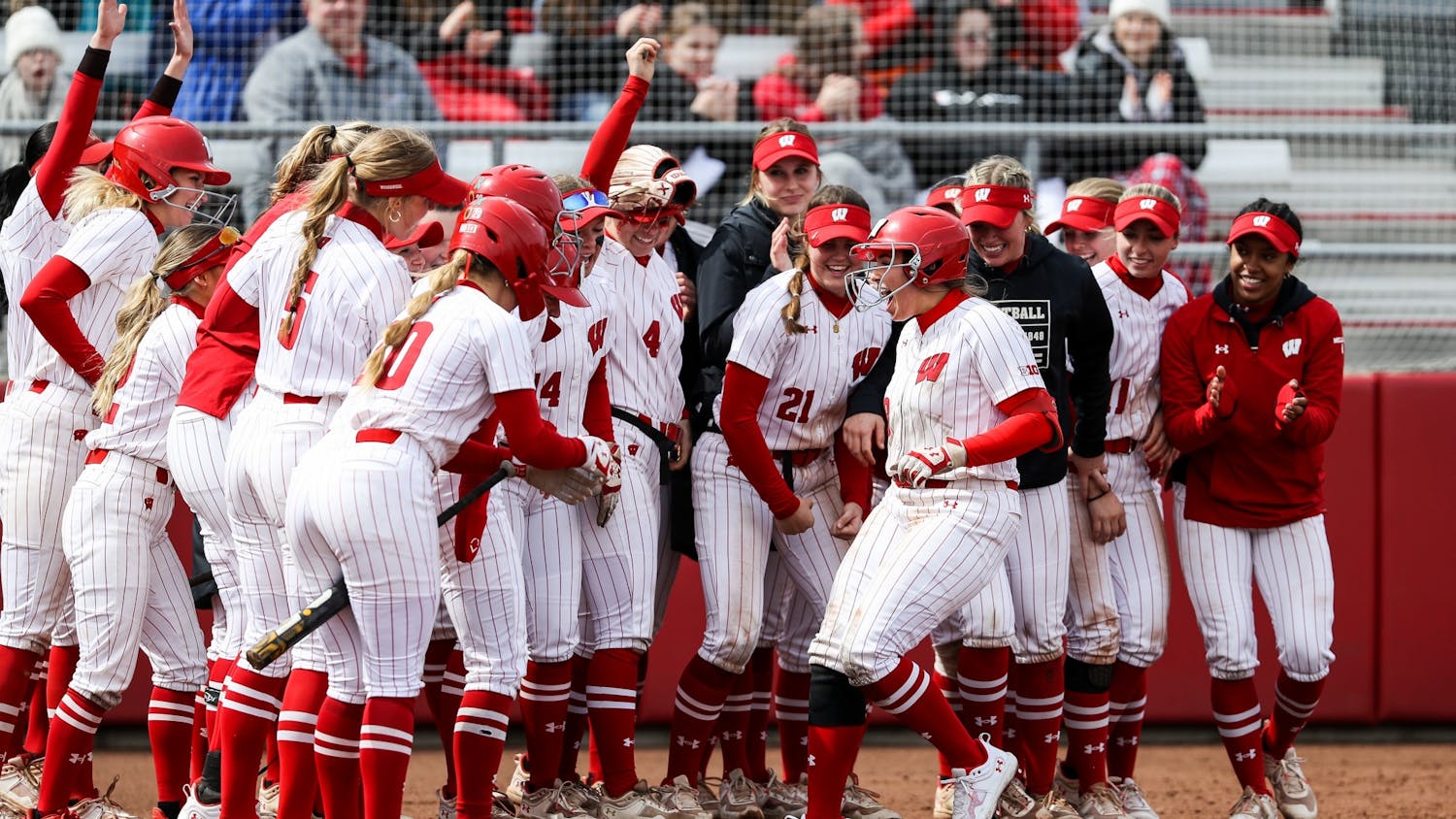For the second consecutive week, Corey Clement’s game day uniform consisted of a snapback, headset and T-shirt. Hampered by a groin injury that is looking more and more like a serious issue, rather than a nagging minor impairment, Clement’s absence again made offensive coordinator Joe Rudolph get creative with the game plan.
Taiwan Deal and Dare Ogunbowale split carries, 16 to 14, respectively, and both had an average day. Rudolph turned to the wildcat midway through the third quarter, bringing Tanner McEvoy into the shotgun and allowing him to run wild, picking up nine and then 32 yards on consecutive plays to punch it in for a touchdown.
Between the steady output of Deal and Ogunbowale and the flashy play of McEvoy, the best athlete on the team, there was just enough production from the backfield to keep Joel Stave from having to throw at least 20 passes for the first time this season.
While serviceable, Wisconsin’s running game is simply not aligning with the historically dominant element of Badger football. Whether it’s the jigsaw puzzle of an offensive line UW has been working with, Clement’s absence or Ogunbowale and Deal’s slow start, the Badgers’ difficulty running the ball is going to catch up with them after next week’s after-dark blowout of Hawaii.
A common phrase among Wisconsin offensive players is “staying ahead of the chains,” meaning that a main focus of the offense this season is to pick up chunks of yards on first and second down to avoid third-and-long situations, or getting to third down altogether. Those instances limit the playbook, force players to press more than they normally would and encourage the offense to take risks more than it would like.
The passing game up until this point has held up its end of the deal, as Wisconsin’s 67 passing attempts on first and second down have averaged 8.9 yards, an incredibly efficient output that deviates from last season’s performance.
Running the ball is a different story. On first downs, Wisconsin is averaging 5.24 yards per carry, down from last year’s 7.19, and 3.95 yards on second down, dwarfed by 2014’s 7.39 yards per attempt. Its first and second down rushing output is 46th and 94th in the nation, respectively, but the real concern extends beyond statistical rankings based on a relatively small sample size.
In the coming weeks, especially if Clement’s primary responsibility during games continues to be listening to play calls and dishing out pointers, teams are going to adopt the opposite of the anti-Melvin Gordon defense. In 2014, it wasn’t surprising to see opposing teams stack eight or even nine defenders inside the box, daring an inept Wisconsin passing attack to defy the odds and actually attempt a pass beyond the first down marker. Now, as the rushing game continues to fail to establish itself as a legitimate threat, defenses can bring in extra defensive backs, blitz furiously from the edges and commit primarily to defending the pass.
The warning signs are already in place. Troy’s time of possession Saturday was 33:22, while Wisconsin held on to the ball for 26:38, despite the fact that the Trojan’s pace-oriented offense is predicated on squeezing as many plays as humanly possible into four quarters of a football game, a strategy that typically doesn’t lend itself well to holding on to the ball for an extended period of time.
Wisconsin’s remaining opponents don’t operate at the same pace as Troy, but they will be able to capitalize on UW’s shortcomings on first and second down and the relatively short amount of time it spends on the field, with its time of possession ranking 59th, nationally.
Stave and the wide receiver corps have been a pleasant surprise thus far. But as Wisconsin approaches the conference schedule and begins taking on actual FBS defenses, the passing game will be slowed down, which, in combination with its sputtering rushing attack, is all too disconcerting.





